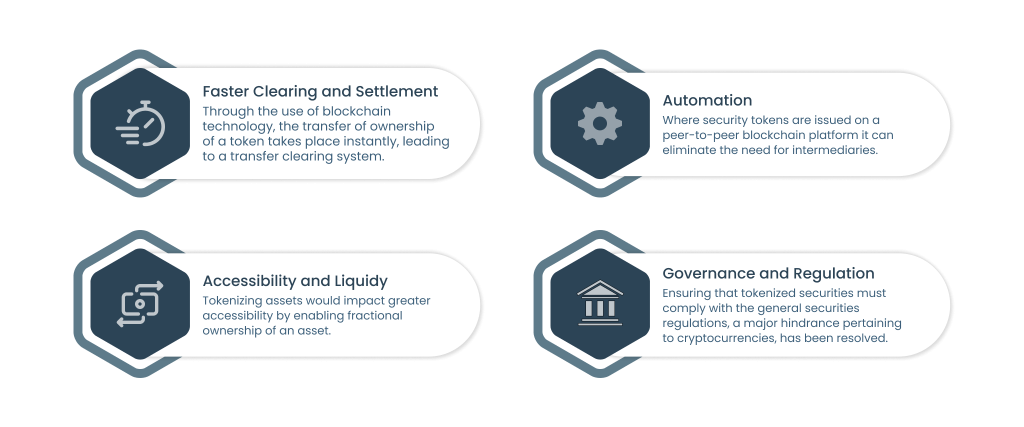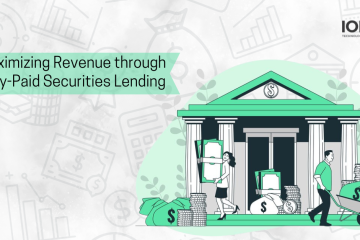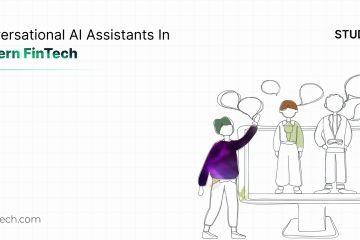Distributed ledger technologies (DLTs) are poised to become a profound transformation in the digital brokerage landscape. A pivotal aspect of this technology’s revolutionary capacity lies in the tokenization of assets. This involves the digitization of tangible assets on decentralized ledgers or the introduction of traditional asset classes in tokenized formats.
Asset tokenization in the digital brokerage sector is expected to bring improved liquidity potential and tradability of assets with less liquidity, and it also ensures faster and more efficient clearing and settlement.
This became more valiant when DTCC announced a project on the Ion platform, which is poised to be an alternative settlement platform leveraging DLT (Distributed Leader Technology).
What Is The Tokenization of Assets, And Why Is It Important?
The tokenization of assets is the process of issuing a blockchain token for the securities in the digital brokerage, which is a security token that digitally represents a real, tradeable asset. This is similar to the traditional process of securitization but with a modern twist. These security tokens are made through a type of initial coin offering (ICO) called a securities token offering (S.T.O.) to differentiate it from other types of ICOs that can make different tokens, like equity, utility, or payment tokens.
An STO can be used to make a digital representation. For example, a security token could represent a share in a company, ownership of a piece of real estate, or participation in an investment fund. Then, these security tokens can be sold on a market for second-hand goods.
What Are The Benefits of Asset Tokenization in Digital Brokerage?
Greater Liquidity
Assets can be tokenized, particularly private securities or assets that are generally illiquid, like fine art, so that these tokens can then be exchanged on a secondary market of the issuer’s choosing. Access to a wider range of trades expands the market’s liquidity, which benefits buyers and sellers by giving investors and sellers more freedom and allowing tokens to benefit from the premium associated with liquidity to raise the value of the underlying asset.
Faster Transactions
The transaction of the tokens entirely happens through smart contracts, and the smart contracts (software formulas built into a blockchain that trigger actions based on pre-set parameters) are used to handle the exchange of tokens; some parts of the process are automated. This technology can make it easier to buy and sell because there will be less paperwork to do and fewer middlemen to deal with. This means that deals can be done faster and for less money.
Transparency And Security
An immutable record of ownership can be included with a security token, together with the token holder’s rights and obligations under the law. These features offer to increase transaction transparency by letting you know who you are dealing with, what rights you and they have, and who has previously possessed this token.
More Accessibility
Tokenization, which has lower minimum investment quantities and durations, may make asset investing more accessible to a larger audience. Due to the great degree of divisibility of tokens, investors can buy tokens that represent minuscule portions of the underlying assets. A large decrease in the minimum investment requirements will be possible if each order is less expensive and simpler to process. Furthermore, since investors can trade their tokens on the secondary markets, which are theoretically worldwide and open 24/7 (subject to regulatory constraints), the enhanced liquidity of security tokens may also allow for shorter minimum investment periods.

In Digital Brokerage, The Impact of Asset Tokenization In Post-trade Process
- Tokenization has the potential to shorten settlement cycles, potentially achieving near-instantaneous settlement (T+0). By simplifying reconciliation, streamlining post-trading processes, and reducing intermediaries, securities transactions can settle shortly after initiation.
- This eliminates third-party risks, rendering clearing houses (CCPs) and margins unnecessary, resulting in significant cost reductions.
- However, it’s essential to recognize that factors beyond technology, such as legal considerations and liquidity management, may necessitate some time between transaction initiation and settlement. Achieving complete settlement cycle elimination is feasible in a digital landscape but requires system adaptations, regulatory changes, and market education.
Effective Way of Delivery Vs. Payment Using Asset Tokenization
The settlement of a transaction in securities consists of two “legs”: the payment “leg” – the transfer of the money from the buyer to the seller, and the delivery “leg” – the transfer of the security from the seller to the buyer.
At present, each of the legs is settled in a different system – the securities are cleared in the CSD systems, whereas the money is cleared in the system of the central bank – both using the account-based approach.
In a digital world, tokenizing can be applied to the payment “leg,” the delivery “leg,” or both:
Where tokenizing is applied solely to the payment leg, the process of transferring the payment against the transfer of the security (DvP) is carried out based on an AvT (Account versus Token) mechanism – account-based transfer of the securities and tokenized transfer of the money.
When tokenization extends to both legs of the transaction, it guides in a new era of DvP, approaching a state of near perfection. The standout advantage of the TvT (Token vs Token) method lies in its exceptional capability to achieve flawless simultaneous settlements of both money and securities, both of which are represented as digital tokens, all within a single Distributed Ledger Technology (DLT)-based platform.
The DvP process conducted through a unified ledger DLT, where both securities and money are embodied as digital tokens, is often referred to as “atomic settlement.” This method is characterized by perfect synchronization, effectively eliminating any risk of default in either leg of the transaction.
The financial industry has grappled with these challenges in recent years as it delved into tokenization and experimented with tokenizing for many years. The International Bank for Reconciliation and Development and the Commonwealth Bank of Australia worked together on a project called “i-bond.” This is a type of debt product that is made up of digital tokens. The usual way to settle these instruments with money is through the central bank.
Wrapping It Up
The tokenization of assets through Distributed Ledger Technologies (DLTs) in digital brokerage represents a significant transformation in the financial market. This innovative approach digitizes both tangible and traditional assets, offering a multitude of advantages to participants in the financial ecosystem.
Asset tokenization’s impact on post-trade processes is profound. This venture can automate clearing and settlement, offering efficiency and reducing complexity. Shorter settlement cycles improve investor protection and release capital from margin requirements.
As financial institutions and firms in the digital brokerage landscape continue to explore the value of tokenization, at Ionixx, we help capital market firms tackle the challenges of widespread adoption through modern technology and custom-built solutions to generate meaningful strategic value. Contact us today.


